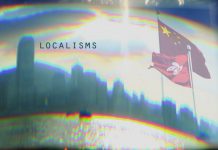
Asked to identify which political parties or groups are localist, 83 per cent of respondents ticked Hong Kong Indigenous. Youngspiration and Civic Passion followed with 78 per cent and 77 per cent of respondents recognising them as being localist respectively. However, only 33 per cent identified Hong Kong Resurgence as a localist group. Hong Kong Resurgence is led by the proponent of the Hong Kong city-state theory, Horace Chin Wan, who is often regarded as the “godfather” of localism.
And while Youngspiration’s Sixtus Leung Chung-hang has previously denied that Demosisto’s Nathan Law Kwun-chung, Democracy Groundwork’s Lau Siu-lai and Land Justice League’s Eddie Chu Hoi-dick are localists, 20 per cent of respondents classified Democracy Groundwork as localist and close to half identified Demosisto as localist. In fact, all three describe themselves as supporters of “democratic self-determination”.
“Whether localism equals advocating Hong Kong independence remains blurry. A year ago Youngspiration did not really mention Hong Kong independence. Society is continuously defining it,” says CUHK’s Lee. He adds that it is not just localist terminology that is ambiguous. HKTV founder Ricky Wong Wai-ki, for instance, may be pro-establishment but he is also against the current chief executive.
 When respondents were asked to rate the extent to which certain incidents drew their attention to localists, the Mong Kok Lunar New Year unrest came up top, followed closely by the Umbrella Movement. These were followed in descending order by the anti-parallel traders’ protests, the National People’s Congress Standing Committee’s August 31, 2014 decision, the case of the missing Hong Kong booksellers, and the anti-National Education movement. The anti Hong Kong-Guangzhou speed rail movement and the demolition of the Star Ferry Pier and Queen’s Pier in Central ranked much lower.
When respondents were asked to rate the extent to which certain incidents drew their attention to localists, the Mong Kok Lunar New Year unrest came up top, followed closely by the Umbrella Movement. These were followed in descending order by the anti-parallel traders’ protests, the National People’s Congress Standing Committee’s August 31, 2014 decision, the case of the missing Hong Kong booksellers, and the anti-National Education movement. The anti Hong Kong-Guangzhou speed rail movement and the demolition of the Star Ferry Pier and Queen’s Pier in Central ranked much lower.
Lee says people turned to “localism” after they realised the long-held principle of “peaceful, rational, non-violent” local protest and civil disobedience did not work in achieving their goals.
When respondents were asked to offer terms to describe how they saw localists, some common terms were “passionate”, “radical” and “pro-active” as well as “a hope”, “ambitious” and a “way out” for Hong Kong. The descriptions express young people’s disatisfaction with Hong Kong’s current sitation and their hope that localism can provide a path for the future.

These sentiments are also finding their way into Hong Kong’s popular culture such as films, music, mash-ups and memes, which both reflects the social mood and reinforces it in the audience.
Eric Ma Kit-wai, a CUHK professor and expert on Hong Kong identity and popular culture, says the prevailing social mood is best expressed through popular culture, which can be dramatised and visualised.
“A series of social incidents, such as the Umbrella movement, the anti-Guangzhou-Hong Kong high-speed rail movement, the anti-national education movement and so on, have accumulated the negative emotions of the youth… With such factors, producing the localist songs and movies is a way to project their emotions,” says Ma.
Ma believes this is the reason why the film Ten Years, which can be seen as a product of localist culture, is so popular among youngsters. Studentlocalism’s Sunnie Hung says she is affected by films and has watched the dystopian film three times. “I think the scenes [depicted in the film] are becoming closer and closer to our reality in Hong Kong. It’s not an exaggeration at all,” she says.









































